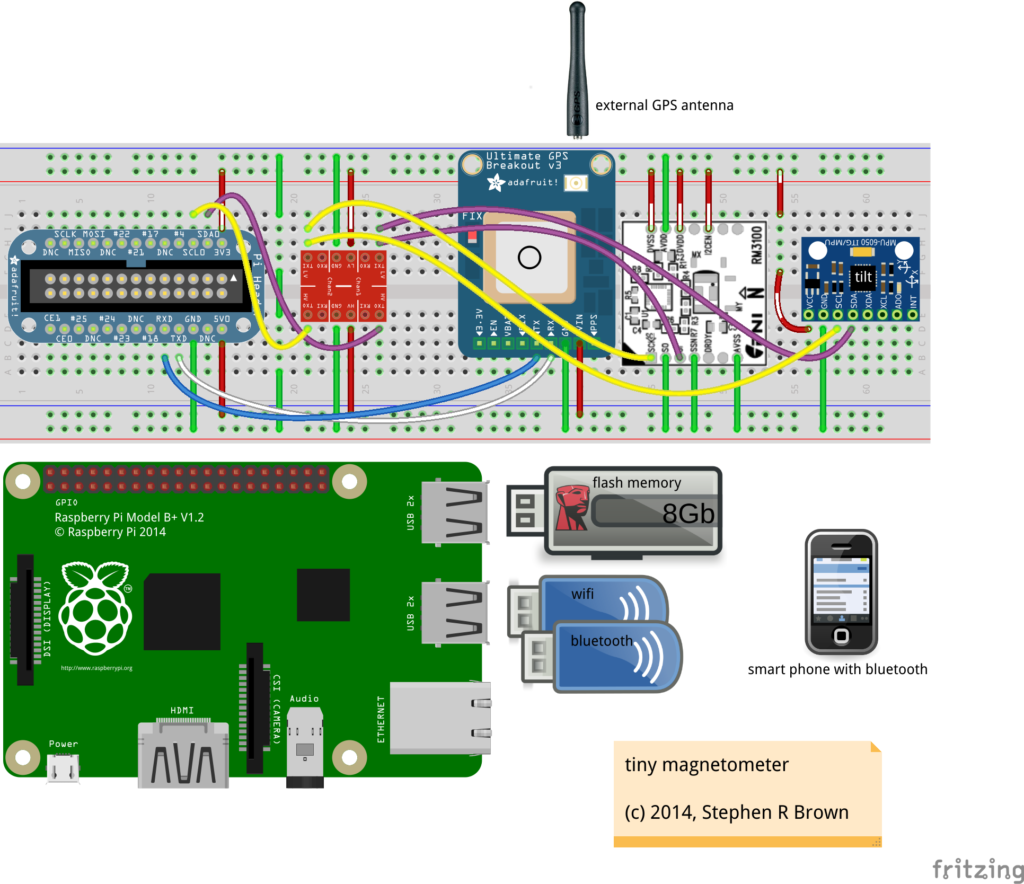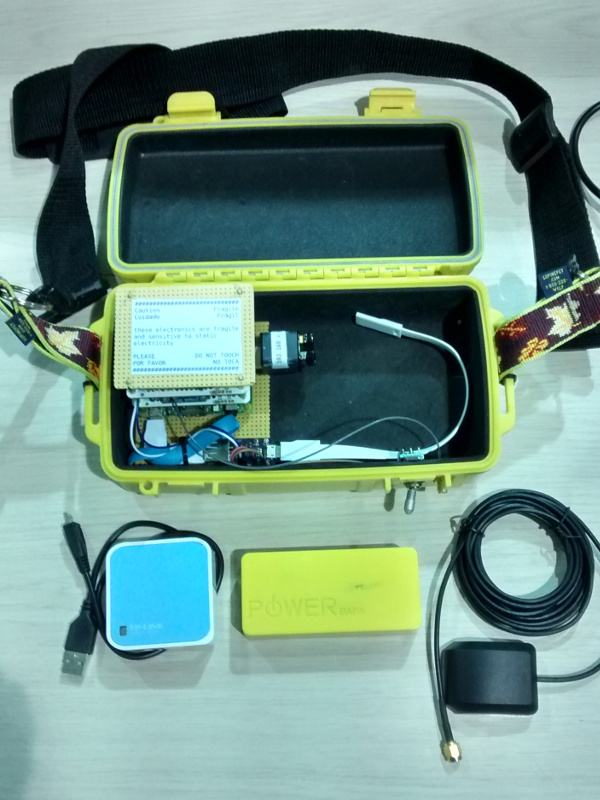Without further ado I want to show a picture of the tiny magnetometer and describe some of its features. Secondly, I want to show the results of a first test of the gadget which is now leading to refinements in the controlling software defining a specific calibration step in the measurement procedure. Later on in other posts I will describe the selection of components and the inner workings in detail.
The electronics are self-contained and all fit in a shiny yellow weather-resistant box with a shoulder strap.

Inside is a linux-based computer (Raspberry Pi ) that controls a GPS module, a 3-axis accelerometer/gyroscope module, and of course a high quality 3-axis magnetic field sensor. There is a lithium-ion battery and a power-controller module. The data acquisition and control is implemented with python. Specifics on hardware and software will follow later.
Data are taken from the sensors and written to a USB flash drive. A wifi dongle allows remote connection to a computer for external login and maintenance. An external computer is not required for general use, however. The device does not have a display nor any controlling keys or switches, just an on/off switch and an external antenna connector. When a measurement sequence is complete, the device is powered off and the USB flash drive is removed and read with another computer. I have codes to read the data files written in scientific python which I run from the anaconda package on my laptop.
So, leaving out some details for now, I put this thing in my suitcase and flew to Quito, Ecuador last weekend (don't fret, I put the lithium-ion battery in my carry-on). The next morning at high noon, my friend Ramiro and I drove from our apartment north 20 minutes to the equator, "la mitad del mundo", where we performed a rudimentary sanity check.
On the equatorial line in the middle of the passing tour groups at the museum of Intiñan we placed the tiny magnetometer on a pedestal and let it record for many minutes while I occasionally rotated the long axis of the yellow box at roughly 45 degree intervals around the points of the compass. Here, the Earth's field should be nearly horizontal (note this is the geographic equator, not the magnetic equator!), so only the yellow box's x and y magnetic sensors have meaningful readings. Later at home I plotted the x and y components against one another.
Since the x and y sensors of the magnetometer measure two perpendicular components of the Earth's horizontal magnetic field vector, I expect this plot to inscribe a circle. Further, geomagnetic field predictions are available for any given day from NOAA given a set of GPS coordinates. For Sunday June 3, 2015 I found the predicted intensity to be 27.1 micro Tesla. The graph (in red) of my hastily performed sanity check shows the essence of a circle, sure enough, and it has only a 1% difference in radius as compared to the ideal circle (shown in green). However we see an odd offset of the circle's center from where we expect it to be at x,y= [0,0]. Also, the z axis of the instrument was not checked out in this test.


Therefore, the conclusion for now is that things seem to be in order, but some calibration is needed. That's my work for next week at INIGEMM.
la mitad del mundo
Of course I have to mention the feature attraction at the museum of Intiñan … a demonstration of the Coriolis effect.
Here's my amateur video of water spinning down a drain. First you'll see what happens when the drain is directly above the equatorial line, then again at about 10 feet to the south of the line, and then again about 10 feet to the north. Pretty amazing. Last summer at this same place I tried my best to screw up the experiment while the tour guide wasn't looking by changing the position and orientation of the tub … to no avail! It is robust. The horizontal guy at the end of the video is my embarrassed friend/lost brother, Ramiro.



